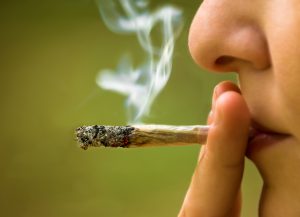 There is a heightened level of interest on the impact of marijuana usage in the oral cavity given the number of states that have legalized the drug for medical and recreational uses. Twenty-six states and the District of Columbia currently have laws legalizing marijuana in some form. Several other states will soon join them.
There is a heightened level of interest on the impact of marijuana usage in the oral cavity given the number of states that have legalized the drug for medical and recreational uses. Twenty-six states and the District of Columbia currently have laws legalizing marijuana in some form. Several other states will soon join them.
At the present time, the body of research on the effects of cannabis on the oral cavity and periodontitis in particular is very limited. A recent JADA article (J Am Dent Assoc. 2017 Mar;148(3):179-184) entitled, “Management of cannabis-induced periodontitis via resective surgical therapy: A clinical report.” involved a 23-year-old female patient who reported frequent marijuana use over a three year period. She further reported that gingival enlargement and xerostomia started shortly after she started smoking cannabis. The authors successfully managed the patient’s cannabis-induced periodontitis through resective surgical therapy and non-surgical therapy. They also helped the patient to quit cannabis smoking. Among their conclusions was that frequent chronic cannabis use may be associated with alveolar bone loss and gingival enlargement as it did in the patient in this case report.
Another recent article (J Periodontol. 2017 Mar;88(3):273-280) in the Journal of Periodontology used 2011-2012 NHANES data. The authors examined frequent recreational cannabis (FRC) use, including marijuana and hashish, and the incidence of periodontitis as defined by the CDC/AAP classifications. Statistical analyses concluded that FRC use is associated with deeper probing depths, more clinical attachment loss, and higher odds of having severe periodontitis.
There are a limited number of studies that have also reported gingival enlargement similar to phenytoin-induced gingival enlargement. Other concerns include the carcinogenic potential of cannabis and the potential effects on the cardiovascular system.
It is clear that additional research is needed to identify the specific health consequences of cannabis usage. There is some urgency since marijuana usage is increasing. According to a 2015 NIH press release, the prevalence of marijuana use among U.S. adults doubled over the past decade. Cannabis is the most widely used illicit substance in the U.S. as reported in the JADA study noted above. This is particularly important for dental professionals since cannabis is most commonly smoked. Educating patients on the potential oral and general health consequences of cannabis usage may motivate some individuals to cease.
For more information on how to become an OralDNA Provider – scan HERE: 
- The Insights Provided by Salivary Testing - December 27, 2019
- I Don’t Need That, We’re Already Getting Good Results - November 29, 2019
- What’s Your Excuse? - August 30, 2019
